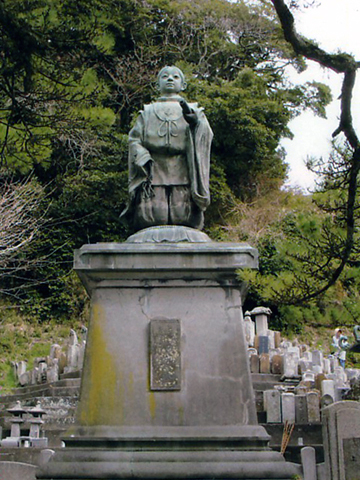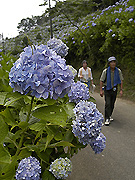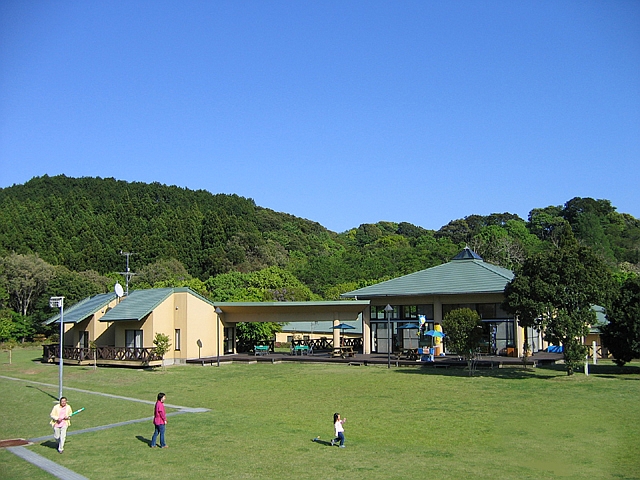
誕生寺
建治2年(1276)、日蓮聖人の生誕地に、弟子の日家[にけ]が一宇を建立したのが開基とされる日蓮宗の大本山。境内には、徳川光圀[みつくに]が寄進した十界本尊木像を安置する本堂や52本の太いケヤキの柱で支えられている祖師堂などみどころが多い。
Info
Business Hours
Price
Spot Category

The information provided reflects the details available at the time of the survey.
Please note that facility details may change due to the facility’s circumstances, so please check for the latest information before visiting.
This content has been translated using machine translation.
Information provided by: JTB Publishing
The content uses an automatic translation service, which is not always accurate.
The translated content may be different from the original meaning, so please understand and use it.

建治2年(1276)、日蓮聖人の生誕地に、弟子の日家[にけ]が一宇を建立したのが開基とされる日蓮宗の大本山。境内には、徳川光圀[みつくに]が寄進した十界本尊木像を安置する本堂や52本の太いケヤキの柱で支えられている祖師堂などみどころが多い。

安房小湊駅からスタートして、内浦山県民の森、麻綿原高原、清澄寺までの全長13.5kmのハイキングコース。帰りは清澄寺バス停からバスで安房天津駅へ戻ることになる。7月中旬~8月中旬の開花時期には、まるでアジサイのトンネルの中を歩くようだ。所要3時間30分。

清澄山系の南東斜面に面した、294万平方mの森林。緑豊かな自然の宝庫として、ハイキングや自然観察などが満喫できる。公共の宿せせらぎ、ログキャビン、オートキャンプ場などの宿泊施設も整う。

On the occasion of the Ojō Kōki, who was appointed as the lord of Osugasō, Shimousa Province, he was invited by Shinano Suwa Taisha Shrine as the god of the lord of the territory. He has since been revered as the god of industrial development, the god of wisdom, and in recent years as the god of advanced learning. The present main shrine is of the 1853 (Kaei 6) construction, and the annual festival "Sawara no Taisai (Autumn Festival)", which takes place in October every year, is designated as a national important intangible folk cultural property.

The temple of the Tendai sect, known as Narikiri (Namikiri), is a temple of the Tendai sect that collects the thick faith of the fishing people for great fishing prayers and sea protection. The main priest, Fudō Myōō, was reportedly picked up from the sea by the wives of the fishermen of the land during the middle Kamakura period and laid them here to rest. The thatched-roofed Fudō, which houses Fudō Myo, is designated as a national important cultural property, and is presumed to have been erected during the Muromachi period.

Western-style Mie-bashi, a masonry method, on the lower Nagao River at Takiguchi, Shirahama. Because there are three arches, it is not really glasses, but it has come to be called a glasses bridge from the appearance of moving to the river. The bridge was built in Meiji 21 (1888) with a donation of 399 yen and 40 yen from the villagers. He said he had walked across the river before the construction. It is a sturdy bridge that, in wartime, tanks passed through it without being broken by the Great Kanto Earthquake. Repair work was carried out in 1977 and 1993, and the figure remains at the time of construction. Prefectural Designated Tangible Cultural Property. Japan's Meihashi Hyakusyo.
This website uses cookies so that we can provide you with the best user experience possible. Cookie information is stored in your browser and performs functions such as recognising you when you return to our website and helping our team to understand which sections of the website you find most interesting and useful.
Strictly Necessary Cookie should be enabled at all times so that we can save your preferences for cookie settings.
If you disable this cookie, we will not be able to save your preferences. This means that every time you visit this website you will need to enable or disable cookies again.
